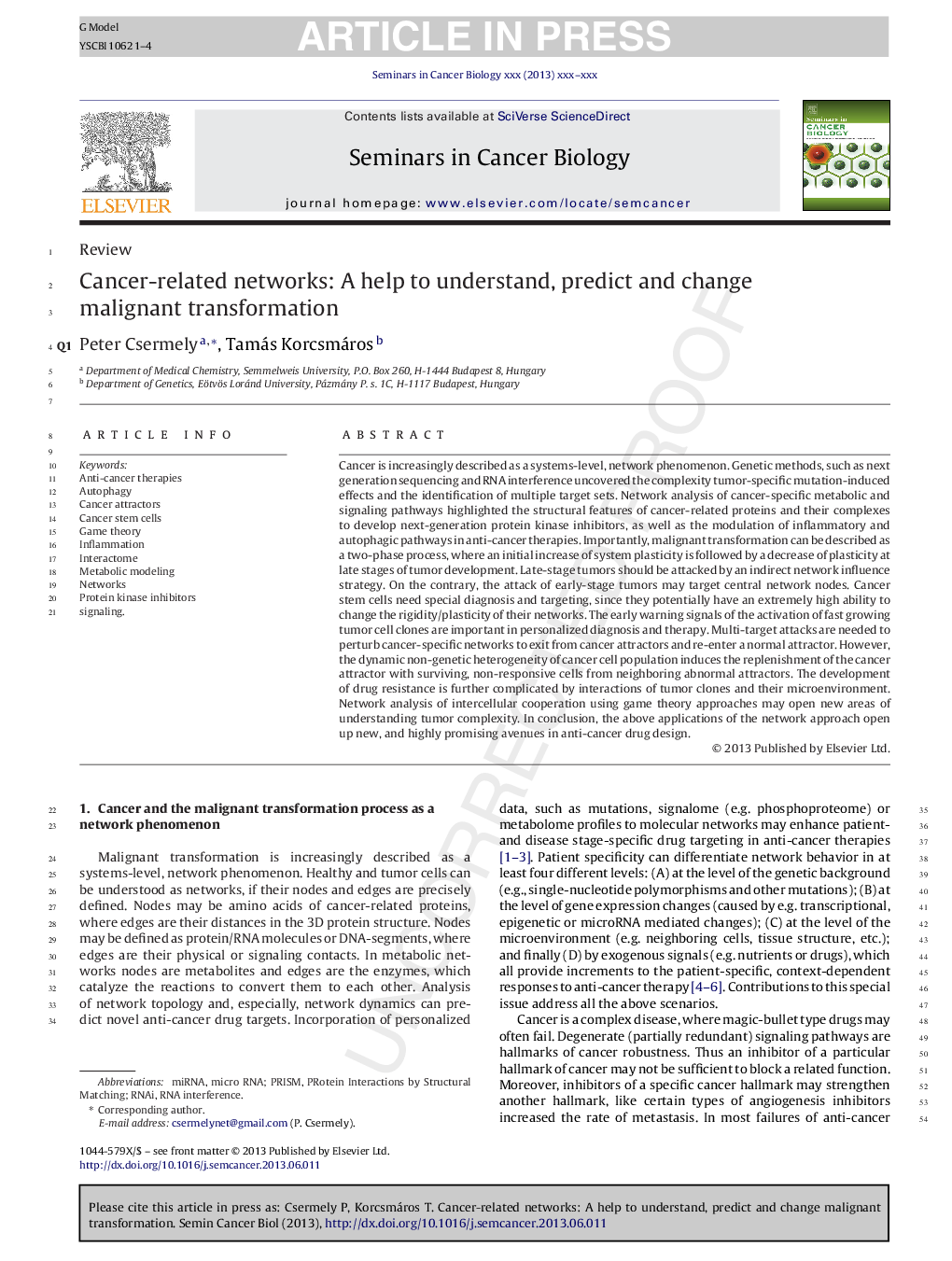| کد مقاله | کد نشریه | سال انتشار | مقاله انگلیسی | نسخه تمام متن |
|---|---|---|---|---|
| 10845617 | 1069794 | 2013 | 4 صفحه PDF | دانلود رایگان |
عنوان انگلیسی مقاله ISI
Cancer-related networks: A help to understand, predict and change malignant transformation
ترجمه فارسی عنوان
شبکه های مرتبط با سرطان: کمک به درک، پیش بینی و تغییر تحرک بدخیم
دانلود مقاله + سفارش ترجمه
دانلود مقاله ISI انگلیسی
رایگان برای ایرانیان
کلمات کلیدی
Anti-cancer therapiesRNA interference - RNA تداخل کنندهRNAi - RNA سرکوبگر،RNA مداخلهگر، RNA خاموش کنندهmicro RNA - RNA میکروAutophagy - اتوفاژیinflammation - التهاب( توروم) interactome - تعاملCancer stem cells - سلولهای بنیادی سرطانیNetworks - شبکه هاMetabolic modeling - مدلسازی متابولیکPrism - منشورProtein kinase inhibitors - مهار کننده های پروتئین کینازMiRNA - میکروRNA، ریزآرانای، miRNAGame theory - نظریه بازی ها
موضوعات مرتبط
علوم زیستی و بیوفناوری
بیوشیمی، ژنتیک و زیست شناسی مولکولی
زیست شیمی
چکیده انگلیسی
Cancer is increasingly described as a systems-level, network phenomenon. Genetic methods, such as next generation sequencing and RNA interference uncovered the complexity tumor-specific mutation-induced effects and the identification of multiple target sets. Network analysis of cancer-specific metabolic and signaling pathways highlighted the structural features of cancer-related proteins and their complexes to develop next-generation protein kinase inhibitors, as well as the modulation of inflammatory and autophagic pathways in anti-cancer therapies. Importantly, malignant transformation can be described as a two-phase process, where an initial increase of system plasticity is followed by a decrease of plasticity at late stages of tumor development. Late-stage tumors should be attacked by an indirect network influence strategy. On the contrary, the attack of early-stage tumors may target central network nodes. Cancer stem cells need special diagnosis and targeting, since they potentially have an extremely high ability to change the rigidity/plasticity of their networks. The early warning signals of the activation of fast growing tumor cell clones are important in personalized diagnosis and therapy. Multi-target attacks are needed to perturb cancer-specific networks to exit from cancer attractors and re-enter a normal attractor. However, the dynamic non-genetic heterogeneity of cancer cell population induces the replenishment of the cancer attractor with surviving, non-responsive cells from neighboring abnormal attractors. The development of drug resistance is further complicated by interactions of tumor clones and their microenvironment. Network analysis of intercellular cooperation using game theory approaches may open new areas of understanding tumor complexity. In conclusion, the above applications of the network approach open up new, and highly promising avenues in anti-cancer drug design.
ناشر
Database: Elsevier - ScienceDirect (ساینس دایرکت)
Journal: Seminars in Cancer Biology - Volume 23, Issue 4, August 2013, Pages 209-212
Journal: Seminars in Cancer Biology - Volume 23, Issue 4, August 2013, Pages 209-212
نویسندگان
Peter Csermely, Tamás Korcsmáros,
